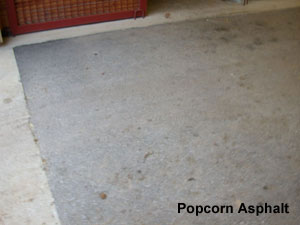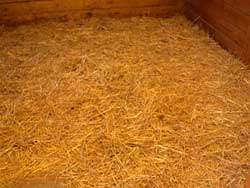Ashley Griffin, University of Kentucky
Flooring
Packed or puddled rock-free clay on a well-drained base makes one of the best floors for stables. It is usually easy to obtain. However, it is difficult to keep clean, and more flooring has to be added from time to time. Wood plank stall floors are preferred by some horse owners, but they are hard to keep dry and free from odor. Concrete floors are the least desirable, and if used, a considerable amount of bedding is needed to prevent lameness.
“Popcorn” asphalt is one of the most common floorings used in stalls. It is porous, allows drainage of water, and does not require as much bedding as concrete. Recycled rubber bricks are used for stall floors and alleys by some horseowners.
To ensure adequate drainage, elevate the top of the floor 8 to 12 inches above the outside ground level. Concrete floors are used in the wash area and are desirable in the feed and tack rooms. Avoid floor finishes that are too slick, such as troweled concrete and some asphalts.
Bedding
Provide dry bedding that will adequately support the horse and keep it comfortable. Useful materials include straw, shavings, sawdust, old hay mixed with wood shavings, grass hay, and shredded newsprint with wood shavings.




